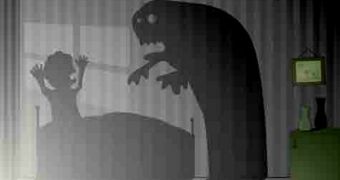A group of investigators from the California Institute of Technology (Caltech) just published a new study, showing how the fear output of the amygdala, a region of the brain that controls fear, is kept in a delicate balance by two different mechanisms.
The researchers say that the two different neural subtypes act together, balancing each other out to produce a natural response to fear, that is neither too strong, nor ignorant to a real or perceived threat.
Fear catches on different forms for different people. For instance, some fear the drop in roller coaster rides, whereas others get goose bumps when they hear a noise in the night. But the thing about fear is that it strikes fast, and brings with it a host of modifications in the body.
In addition to an elevated level of stress hormones, it also increases the pulse, clenches the stomach and dries the throat. Yet, the feeling does not originate from either of these organs, but rather from the amygdala, which is a region of the brain that is shaped like an almond.
It is responsible for sending out signals that trigger all the subsequent modifications, but none of them can take place without express instructions from the amygdala. This is what made the Caltech team so interested in the structure.
The experts began conducting a thorough study on how these responses kick into gear, and the best approach to do that is to start making sense of the complex neural circuitry that controls the emotion. Details of the work appear in the latest issue of the esteemed scientific journal Nature.
The investigators were led by the Caltech Benzer Professor of Biology David J. Anderson, who also holds an appointment as an investigator at the Howard Hughes Medical Institute.
In the research paper, the expert and his team describe a neural mechanism that acts as a gate to stop the outflow of fear from the amygdala. Without it, we would live our lives in a constant state of panic.
During the researches, the scientists were able to identify two subtypes of neurons, which act in concert even if they have completely antagonistic functions. Their seesaw-like action is responsible for controlling our fear response.
“Imagine that one end of a seesaw is weighted and normally sits on a garden hose, preventing water – in this analogy, the fear impulse – from flowing through it,” Anderson explains.
“When a signal that triggers a fear response arrives, it presses down on the opposite end of the seesaw, lifting the first end off the hose and allowing fear, like water, to flow,” he goes on to say.
“Now that we know about this 'seesaw' mechanism, it may someday provide a new target for developing more specific drugs for treating fear-based psychiatric illnesses like post-traumatic stress disorder, phobias, or anxiety disorders,” he concludes.

 14 DAY TRIAL //
14 DAY TRIAL //